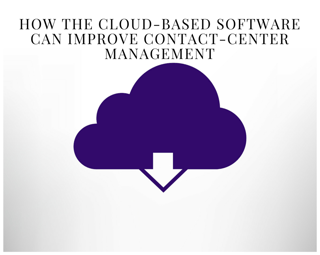 One of the main challenges that contact centers face is disconnected systems. These systems are numerous and agents are required to wade through them in order to locate information, provide service, offer support, or make sales.
One of the main challenges that contact centers face is disconnected systems. These systems are numerous and agents are required to wade through them in order to locate information, provide service, offer support, or make sales.
This takes up time, energy, and resources and creates a poor, frustrating experience for agents and customers alike. Fortunately, there is a better way.
By using cloud-based software, contact centers can produce an integrated experience that is easier for both customers and agents. Read on to learn more about the benefits of cloud-based software and how they can be applied to a contact center setting.
The cloud offers scalability
Regardless of whether you’re working over the phone, web, email, social media, or even text messages, cloud-based software has the power to scale to unique call center needs and cater to producing customer conversions across a wide variety of platforms. This, in turn, allows agents to increase sales and offer more satisfying service for customers.
Because the cloud is an interlinked interface, it allows agents to access customer context from a variety of different channels, thereby allowing employees to then interact with the information dynamically. This provides more customer engagement and faster response on the part of the agent.
The cloud offers increased customer service
Good customer service is one of the most important aspects of running a successful business and there is arguably nothing customers hate more than terrible contact center customer service. Fortunately, the cloud offers a way around this through features like prioritized calls, data-driven routing, and faster resolution times for customers.
All of these things combine to create a highly personalized customer service experience. As an added bonus, many cloud-based software platforms offer customers the option of eliminating hold times by providing an agent callback feature.
This allows customers to detach themselves from the phone and receive a callback as soon as their query reaches the front of the line. This is good for agents as it smooths call spikes and it’s good for the customer because it frees up their time and helps companies stand out from the competition.
The cloud offers seamless information sharing
It’s impossible for agents to provide high-level customer service if they are scrambling to retrieve information on a variety of disconnected web systems. This is frustrating for customers and agents alike and doesn’t do anything for the image or functionality of the company as a whole.
With cloud-based systems, however, these frustrations can be a thing of the past. By offering integrated information and a platform where agents can access customer history, sales history, product and warranty information, company protocols, company contact information, FAQs, and much more, cloud-based systems provide a quality platform for service, availability, and response that is sure to please both agents and customers throughout the entire contact center process.
The cloud offers flexible software
With other systems, contact centers need to maintain, upgrade, and purchase hardware and software as their business changes. With the cloud, however, there’s no need to purchase, maintain, or update hardware or software. Instead, the cloud offers a fluid platform where companies can scale service levels up or down and even support multiple contact centers, ranging from on-site to in-home agents.
This helps meet the demand for real-time, personalized customer service and ensures that agents and customers alike can begin an interaction using one channel and one channel alone. All of this makes for a seamless and more satisfying experience.
The cloud offers balance between need and cost
With the cloud, you pay only for the services you use, which helps contact centers contain costs and offer high-quality customer service options without breaking the bank. Since cloud software is built to be reliable and flexible, it adapts to a company’s needs as they grow and change over time.
This allows even small companies to be exceedingly agile and quick. This, in turn, allows every contact center to offer scalable, high-performance call center services that outpace the competition’s and ensure that their company continues to meet customer needs for years to come.
Conclusion
While contact centers serve an important purpose the architecture of the current system has often rendered contact centers ineffective and frustrating. While this is no fault of individual agents, it can be difficult to offer outstanding customer service when contact centers are struggling to access information and make the best out of a series of disconnected and difficult-to-use systems.
Fortunately, making the switch to cloud-based systems allows contact centers to offer high-quality customer service, to scale needs to business trends, and to interact seamlessly with a variety of platforms. This, in turn, provides a less frustrating and more satisfying experience for customers and agents.
To learn more about how cloud-based systems can help your contact center succeed, contact SpiceCSM today!


